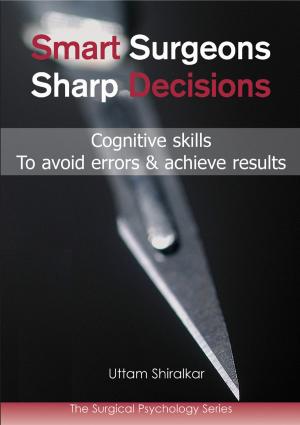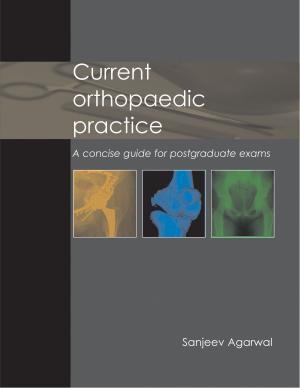Peripheral Neuropathy & Neuropathic Pain
Into the Light
Nonfiction, Health & Well Being, Medical, Specialties, Internal Medicine, Endocrinology & Metabolism, Patient Care, Pain Medicine, Neurology| Author: | Professor Gérard Said MD FRCP | ISBN: | 9781910079003 |
| Publisher: | tfm Publishing Ltd | Publication: | January 9, 2014 |
| Imprint: | Language: | English |
| Author: | Professor Gérard Said MD FRCP |
| ISBN: | 9781910079003 |
| Publisher: | tfm Publishing Ltd |
| Publication: | January 9, 2014 |
| Imprint: | |
| Language: | English |
Written by one of the world's leading experts — Professor Gérard Said MD FRCP, Dpt de Neurologie, Hôpital de la Salpêtrière, Paris, FrancePeripheral neuropathy is a common medical condition, the diagnosis of which is often protracted or delayed. It is not always easy to relate a neuropathy to a specific cause. Many people do not receive a full diagnosis, their neuropathy often being described as 'idiopathic' or 'cryptogenic'. It is said that in Europe, one of the most common causes is diabetes mellitus but there are also many other known potential causes. The difficulty of diagnosis, the limited number of treatment options, a perceived lack of knowledge of the subject —except in specialised clinics, the number of which are limited — all add to the difficulties which many neuropathy patients have to face. Another additional problem for many patients is that once having received a full, or even a partial diagnosis, they are then often discharged back to their primary healthcare team who, in many instances, know little about this condition and how it may impact upon their patients' lives.In order to help bridge this gap in medical knowledge and to give healthcare providers a better understanding of this often distressing condition, The Neuropathy Trust has commissioned a new book on this complex topic. Written by one of the world's leading experts on neuropathy, Professor Gérard Said, it is a 'must read' and also a handy reference book for doctors, nurses, physiotherapists, chiropodists/podiatrists and other health professionals.As well as covering the anatomy of the nervous system and the basic pathological processes that may affect the peripheral nerves, the book covers a whole range of neuropathic conditions. These include, for example, Guillain-Barré syndrome, chronic inflammatory demyelinating polyneuropathy, vasculitic neuropathies, infectious neuropathies, diabetic and other metabolic neuropathies, hereditary neuropathies and neuropathies in patients with cancer. Given the almost explosive increase in diabetes predicted over the coming years and the high incidence of HIV infections alone, not to mention all the other possible causes of peripheral neuropathy, no self-respecting medical unit should be without a copy of this new book on their shelves.The author, Professor Gérard Said, is based in the Department of Neurology at the prestigious Hôpital de la Salpêtrière in Paris. He has devoted a lifetime to the study of peripheral neuropathy and — alongside other great neurological names — added much to the world's ever-growing store of knowledge on this complex but fascinating condition which affects so many individuals.
Written by one of the world's leading experts — Professor Gérard Said MD FRCP, Dpt de Neurologie, Hôpital de la Salpêtrière, Paris, FrancePeripheral neuropathy is a common medical condition, the diagnosis of which is often protracted or delayed. It is not always easy to relate a neuropathy to a specific cause. Many people do not receive a full diagnosis, their neuropathy often being described as 'idiopathic' or 'cryptogenic'. It is said that in Europe, one of the most common causes is diabetes mellitus but there are also many other known potential causes. The difficulty of diagnosis, the limited number of treatment options, a perceived lack of knowledge of the subject —except in specialised clinics, the number of which are limited — all add to the difficulties which many neuropathy patients have to face. Another additional problem for many patients is that once having received a full, or even a partial diagnosis, they are then often discharged back to their primary healthcare team who, in many instances, know little about this condition and how it may impact upon their patients' lives.In order to help bridge this gap in medical knowledge and to give healthcare providers a better understanding of this often distressing condition, The Neuropathy Trust has commissioned a new book on this complex topic. Written by one of the world's leading experts on neuropathy, Professor Gérard Said, it is a 'must read' and also a handy reference book for doctors, nurses, physiotherapists, chiropodists/podiatrists and other health professionals.As well as covering the anatomy of the nervous system and the basic pathological processes that may affect the peripheral nerves, the book covers a whole range of neuropathic conditions. These include, for example, Guillain-Barré syndrome, chronic inflammatory demyelinating polyneuropathy, vasculitic neuropathies, infectious neuropathies, diabetic and other metabolic neuropathies, hereditary neuropathies and neuropathies in patients with cancer. Given the almost explosive increase in diabetes predicted over the coming years and the high incidence of HIV infections alone, not to mention all the other possible causes of peripheral neuropathy, no self-respecting medical unit should be without a copy of this new book on their shelves.The author, Professor Gérard Said, is based in the Department of Neurology at the prestigious Hôpital de la Salpêtrière in Paris. He has devoted a lifetime to the study of peripheral neuropathy and — alongside other great neurological names — added much to the world's ever-growing store of knowledge on this complex but fascinating condition which affects so many individuals.















